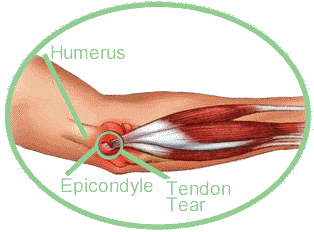Treatment: Days 1-4 following the tendon injury/irritation will be the most painful and vulnerable therefore take great care to follow the steps below.

Why visit an Osteopath?
- To identify the underlying bio-mechanical cause of your tendinitis/injury (e.g. why do I keep getting calf pain when I run?)
- To promote optimal healing to the tissues: preventing scar tissue forming, promoting optimal tissue length and health.
- Recommended and demonstrate the most optimal exercise to help rehab the injury and prevent future injury.
First aid following tendonitis
 Rest - Obviously this prevents further damage or irritation to the tendon, inflammation is at it's greatest within the first 1-4 days following injury - So be careful!
Rest - Obviously this prevents further damage or irritation to the tendon, inflammation is at it's greatest within the first 1-4 days following injury - So be careful!Ice - Apply a bag of frozen peas or a cold pack to the area of inflammation. Tendons attach to bones therefore to locate the painful tendon, you should be able to feel a boney point where the tendon attaches, it should be the most tender spot.
Tip for Icing : For tendons that are close to the skin such as as the patella (knee cap or quadriceps) tendon, just applying the ice pack for a few minutes at a time, rest and reapply 10-15 minutes later.
Add Compression - Use a a regular bandage, compression bandage or ice pack to compress the injured area.
Benifits of Icing
- Decreases the amount of bleeding by vasoconstriction into the injury site and so lessens swelling
- Reduces pain
- Reduces muscle spasm
- Reduces the risk of cell death by decreasing the rate of metabolism
Elevation
Enables inflammatory and excess fluid (lymph) to drain back to the lymph nodes quicker as due to the effects of gravity.
Tendinitis can be a very difficult condition to get rid of if it becomes chronic. Whatever therapy style you decide to pick just ensure the practitioner incorporates:
- A structured biomechnical assessment
- An explanation of the root causes of biomechnical/physiological dysfunction
- An effective treatment and exercise prescription program that is fully explained and justified.
Alex Mackenzie
Wellbeing Osteopathy


